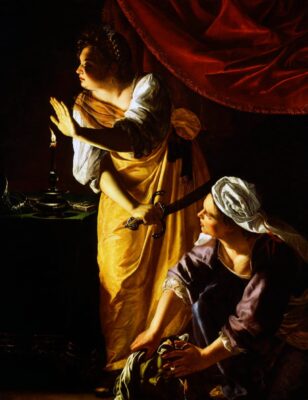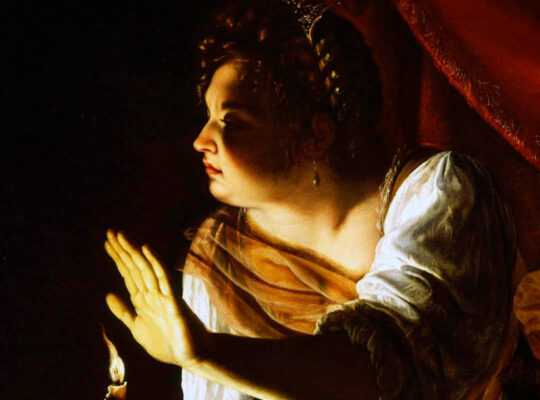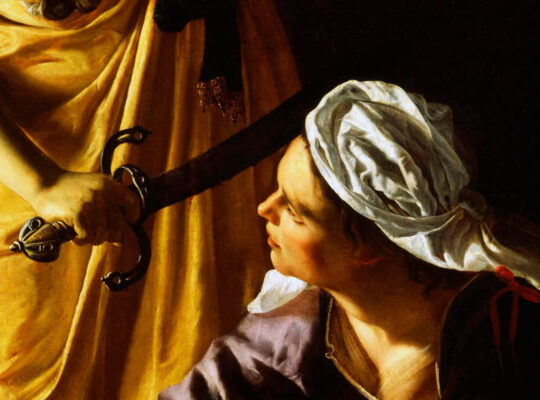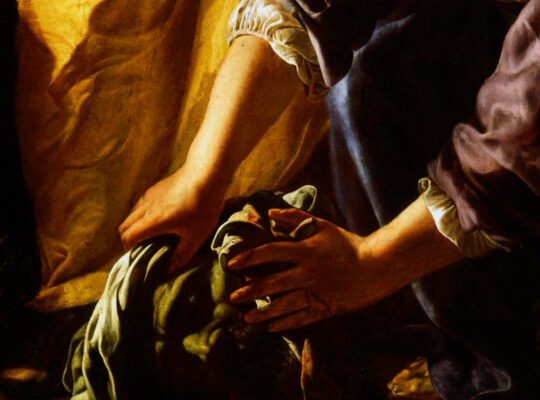Artemisia Gentileschi
1625 – Oil on canvas – Detroit Institute of Arts
Over the last few decades, admiration for the figure of Artemisia Gentileschi has grown like that of no other painter before modernity. At times, it seems that this admiration conceals some kind of condescension, as if such interest was only caused by the injustices (and even a case of rape) that Gentileschi had to suffer during her lifetime, when, in fact, the simple study of her work, without even knowing the difficulties that the artist had to endure, is enough to place her among the most important figures of Baroque painting, and to mark her out as the most original of the caravaggisti.
Unlike Judith Beheading Holofernes, a similarly themed work that the artist created in 1612-13 -barely a year after she was raped by her personal tutor, Agostino Tassi- Judith and her Maid does not explicitly depict the violence of the beheading, as the artist has chosen to depict the moment of escape. The figures of the two women focus their gaze on something -or someone- that the viewer cannot see, while a single candle illuminates the tense scene, giving the protagonists a heroic, almost divine appearance. Judith seems to want to hide the sword while the maiden -who some critics think may be a self-portrait of the artist- hastens to wrap Holofernes’ decapitated head. All in all, Judith and her Maid is a sensational masterpiece in which Gentileschi makes excellent use of Caravaggist tenebrism.
Text: G. Fernández, theartwolf.com
Follow us on:






